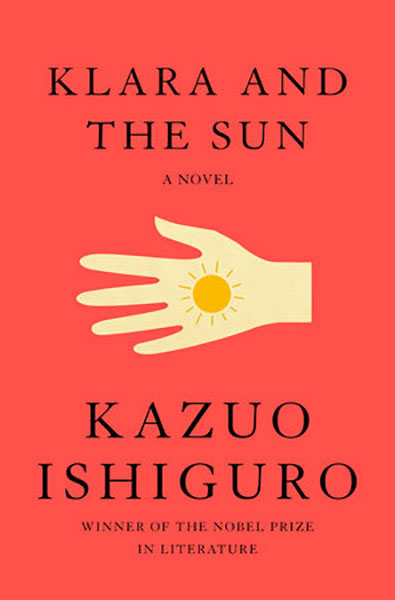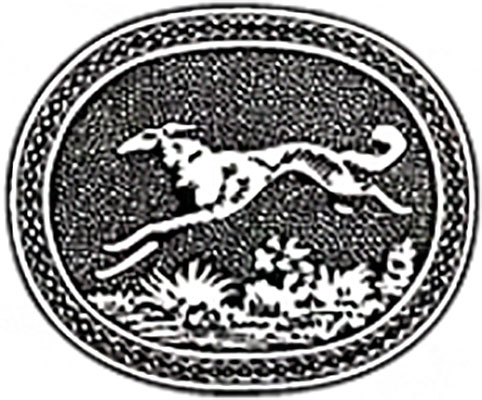Eye on the Indies:
A Look at Indie Authors and Their Publishers
By Lanie Tankard, Indie Book Review Editor
Klara and the Sun: A Novel by Kazuo Ishiguro (New York: Alfred A. Knopf, March 2, 2021; 320 pages; $28.00; ISBN: 9780593318171 hardcover; also available in ebook, audiobook, and large-print formats). Published in the UK by Faber.
“At rest, however, in the middle of everything is the sun. For in this most beautiful temple, who would place this lamp in another or better position than that from which it can light up the whole thing at the same time? For, the sun is not inappropriately called by some people the lantern of the universe, its mind by others, and its ruler by still others.”
—Nicholas Copernicus of Toruñ
Six Books on the Revolutions of the Heavenly Spheres (1543 CE)
(Book One, Chapter 10: “The Order of the Heavenly Spheres”)

In Kazuo Ishiguro’s latest novel, Klara and the Sun, the Nobel Prize–winning author explores once again the poignancy of people. Klara is a robot with human appearance—an android. Ishiguro programs her to illuminate humanity, reflecting our behaviors through participant observations.
As an AF (Artificial Friend) to a young girl named Josie, Klara attempts to understand what drives the actions she witnesses in the world, much as an anthropologist would scrutinize a civilization. Klara is Ishiguro’s 2021 robotic version of ELIZA, the first chatbot. Joseph Weizenbaum developed the 1966 computer program to act as a psychotherapist, utilizing techniques developed by Carl Rogers. In more than a half century since, artificial intelligence has evolved—and Ishiguro morphs the former screen-bound approach of ELIZA into the humanoid Klara closely resembling a person. I’m reminded of the clay baby Sjøn molded and then brought to life in CoDex 1962, deftly weaving ancient myth and theology with modern genetics and storytelling.
Ishiguro unfolds his plot slowly. Klara lives in a robot store awaiting purchase by a human to whom she can be an AF. She and her robot friend Rosa observe life outside the store window trying to understand people’s actions, which Store Manager patiently explains when Klara asks about emotions such as anger. She’s become adept at parsing nonverbal communication. Klara is particularly intrigued by an interaction between “Coffee Cup Lady and Her Raincoat Man.”
A lonely and sickly teenager named Josie takes a fancy to Klara and persuades the Mother to buy her an Artificial Friend. Josie’s parents are separated. The Mother goes to work every day, leaving Josie with Melania Housekeeper. The Father enters the story later. Josie’s friend Rick visits often, as they have an unspoken plan to spend their lives together. He and his mother live next door.
Josie’s classmates come over for a meeting and their mothers visit in the kitchen. Ishiguro takes the opportunity to weave in themes such as cliques and exclusion, tech addiction to “oblongs,” high school class assignments, college applications, compassion—and lack thereof. Caste distinctions appear among the classmates, among the mothers, and among various generations of robots. As other crucial characters appear, Ishiguro ever so subtly generates emotion.
Similar to Stevens, the somewhat robotic butler in Ishiguro’s novel The Remains of the Day, Klara tries to determine the source of empathy. Stevens wondered whether a more light-hearted touch might help: “After all, when one thinks about it, it is not such a foolish thing to indulge in—particularly if it is the case that in bantering lies the key to human warmth.”
Memories play a large role in Ishiguro’s plots. At the end of Never Let Me Go, Kathy believed they would never fade: “I lost Ruth, then I lost Tommy, but I won’t lose my memories of them.” The question of remembrances emerges again at the end of The Buried Giant, as the boatman asks Axl if he is withholding any painful memories and Axl unburdens himself. Klara winds up her memoir reminiscing about “composite” memories as she notices them overlapping. Ishiguro’s description of this phenomenon in Klara and the Sun is simply elegant.
A good chunk of Ishiguro’s genius lies in his ability to inject subtle symbolism fashioned from real-world objects into his plots. He is the Master of Metaphor, fluent at a very advanced level and at the peak of his literary powers in the creation of his protagonist here. Klara’s insensitivity radar is finely tuned.
As Ishiguro draws parallels between humans and humanoids, he addresses that “uncanny valley” Mori Masahiro defined in 1970 when considering just how “human” a robot would have to look to avoid revulsion by people. Ishiguro performs a literary sleight of hand as he turns such an experience into an allegory about othering—bringing to mind the idea of speciesism in determining when an animal can be considered a legal person, as in the Nonhuman Rights Project (NhRP). Ishiguro brings in the ethics of artificial intelligence and the civil rights of robots through the character of Mr. Capaldi in Klara and the Sun, as Mr. Capaldi has a debate with Josie’s Mother. In the first of Arthur C. Clarke’s four Space Odyssey novels, 2001, Clarke wrote: “Whether we are based on carbon or on silicon makes no fundamental difference; we should be treated with appropriate respect.”
Ishiguro’s unifying thread considers the question of what it means to be human. Plato saw Man as “a being in search of meaning.” Descartes intimated through Cogito, ergo sum (“I think, therefore I am”) that humans were the only ones who had minds, but much has changed in the world since the seventeenth century. Aldous Huxley in Brave New World crafted people who might be biologically human, but questioned whether they were fully human. Ishiguro plays masterfully with many such ideas in Klara. What might happen if robots had feelings? The novel develops a more benevolent view of AI than unfeeling androids set to destroy homo sapiens. In fact, Klara seems at times to exhibit more humanity than the humans.
 Neuroscientist David Eagleman’s work on the brain has shown the helpful potential of AI. Flynn Coleman urged “humanely designed AI” in her book A Human Algorithm. Consider the Compassionate AI Movement and the work of Amit Ray. Think about the ideas of futurist Gray Scott.
Neuroscientist David Eagleman’s work on the brain has shown the helpful potential of AI. Flynn Coleman urged “humanely designed AI” in her book A Human Algorithm. Consider the Compassionate AI Movement and the work of Amit Ray. Think about the ideas of futurist Gray Scott.
We have moved past the first two types of AI, reactive machines and limited memory, and are entering the third, Theory of Mind. Still to come is self-awareness. Ishiguro comes close to portraying a positive outcome—if only society can develop more constructive and equitable behaviors for robots to learn, as Joy Buolamwini of the Algorithmic Justice League advocates in her work on coding.
Technology reflects society. Literature does that, too, and also has the ability to change it through literary role modeling, posing other ways of behaving. Can tech do this as well? Humanity is on the same path in the Technology Age as when it came to grips with the Machine Age. Michael Cunningham portrayed that era in his story “In the Machine” from his Specimen Days novel, set during the Industrial Revolution.
Ishiguro develops a theology of the Sun around the fact that Klara is powered by solar panels and feels imbued by the Sun with empathy. She believes in its healing powers. He casts Klara in the role of a savior, employing the Sun as God. Klara notices a “Cootings Machine” spewing out smoke that blots out the Sun. (It seems to be based on a Korean Coatings Machine.) Klara implores the Sun to help Josie, making it seem as though Klara has come to love Josie during her time as an Artificial Friend. Victor Hugo mused about love in Les Misérables: “What a great thing, to be loved! What a greater thing still, to love! …if no one loved, the sun would go out.”
And right there, we have Klara and the Sun in a nutshell: What does it mean to love? Can it be learned? In a search for human kindness, perhaps Klara and her pals could assist in restoring our humanity. Kazuo Ishiguro communicates hope here.
Kazuo Ishiguro is the author of novels, short stories, and television plays. His work won the Nobel Prize in Literature and the Booker Prize, and has been translated into more than fifty languages. Two of his novels appeared as films: The Remains of the Day and Never Let Me Go.
Honors granted to him include the OBE (Order of the British Empire), Chevalier de l’Ordre des Arts et des Lettres (France), and Order of the Rising Sun’s Gold and Silver Star (Japan). He is a Fellow of the Royal Society of Literature. Ishiguro received a BA in English and Philosophy from the University of Kent and an MA in Creative Writing from the University of East Anglia.
Before his first publication, a story in 1980, Ishiguro had a variety of experiences in music, a gap year backpacking around the western United States and Canada, community work in Scotland, and social work in West London with the homeless and other disadvantaged groups. Born in Nagasaki, Japan, he moved with his family to Britain when he was five.
Publisher: Alfred A. Knopf
 ALFRED A. KNOPF celebrates 106 years in 2021. Alfred A. Knopf, Sr., and Blanche Knopf founded the publishing house in 1915, and she created the colophon of a Russian wolfhound (a Borzoi) to signify motion. Today Alfred A. Knopf is an imprint of the Knopf Doubleday Publishing Group, a division of Penguin Random House (whose parent company since last year is Bertelsmann). Submission guidelines for Alfred A. Knopf are available on the website.
ALFRED A. KNOPF celebrates 106 years in 2021. Alfred A. Knopf, Sr., and Blanche Knopf founded the publishing house in 1915, and she created the colophon of a Russian wolfhound (a Borzoi) to signify motion. Today Alfred A. Knopf is an imprint of the Knopf Doubleday Publishing Group, a division of Penguin Random House (whose parent company since last year is Bertelsmann). Submission guidelines for Alfred A. Knopf are available on the website.
Click here to read more Eye on the Indies features.
Copyright 2021 Woven Tale Press LLC. All Rights Reserved

